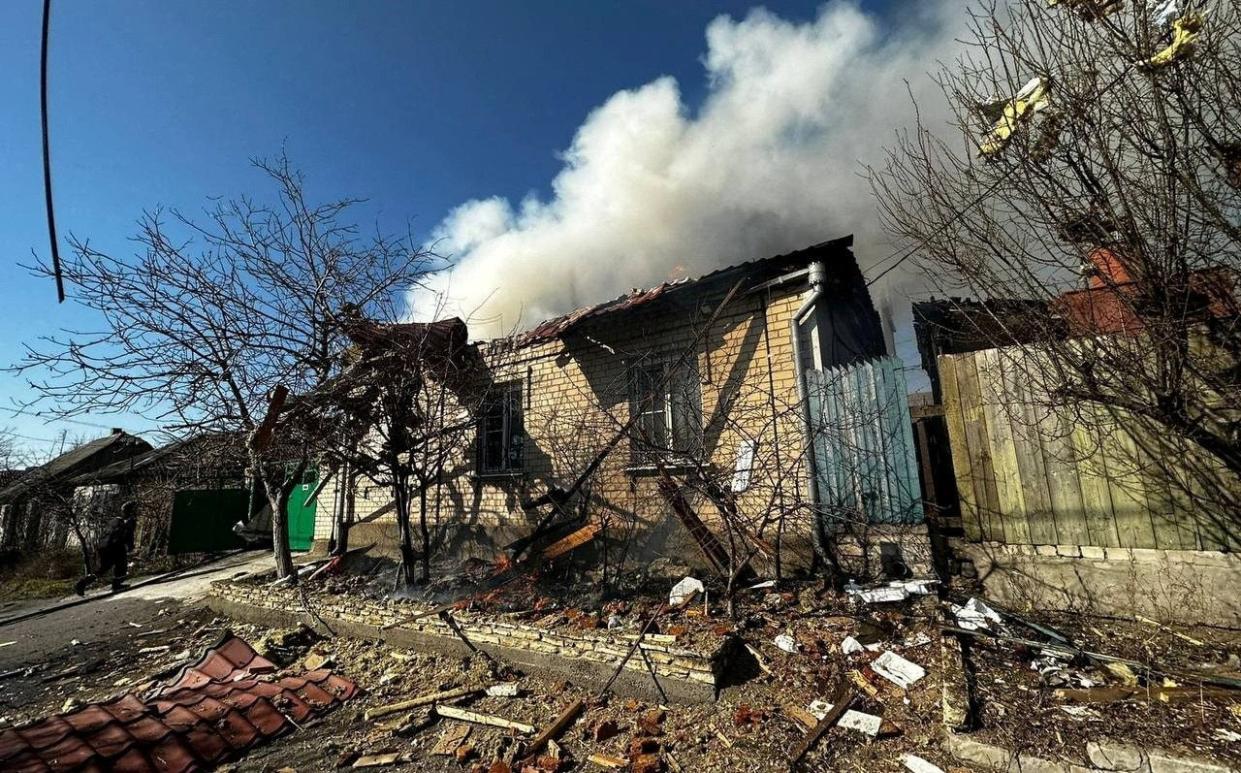Partisans blow up key railway used by Putin’s forces

Ukrainian partisans damaged a stretch of railway in occupied Kherson in a guerrilla attack on Russian logistics.
The Atesh movement claimed responsibility for the explosive strike, which they said would hinder the supply of Russian troops in the southern Kherson and Zaporizhzhia regions.
“We work around the clock for the destruction of the occupying forces and the liberation of Ukraine,” the group said on the Telegram messaging app.
A video shared alongside the social media post showed a detonation alongside a section railroad.
A subsequent picture shared online by the Baza Telegram channel, which is linked to Ukraine’s security services, appeared to show that just a single track of the railway had been damaged.
🔥🔥
Atesh partisans blew up the railway track in the temporarily occupied part of the #Kherson region to bring down the supplies of the Rashists troops
We are working around the clock to destroy the occupying troops and help in liberate Ukraine🇺🇦 from these orcs💀☠ pic.twitter.com/v7CA3pRSYL— АЗОВ South (@Azovsouth) March 12, 2023
The alleged attack took place between the settlements of Radensk and Abrikosivka, which are between 20 and 30 behind enemy lines in Russian-held territory, on the left bank of the Dnipro River.
News of the attack was shared by the Centre for National Resistance, a Kyiv-linked organisation promoting civilian resistance efforts against the Russian invasion.
The claims of sabotage could not be independently verified by The Telegraph. It was not clear how much disruption the attack had caused.
Partisans have played an increasingly important role in helping degrade Russian forces before assaults by Ukraine’s conventional forces.
Natalia Humeniuk, a military spokesman, said the railroad attack was a “rehearsal” for more substantial strikes to come in the future against Russian positions.
“In order to carry out a large-scale action, you need to rehearse a little,” she said.
“In addition, we need to find out, understand and redirect the enemy’s actions in certain areas in order to free up other areas for our own actions.”
Atesh behind number of attacks
Guerrillas operating behind enemy lines help to keep Russian logistics and transportation routes under the control of Kyiv, Captain Humeniuk added.
Atesh, a movement of Ukrainians and Crimean Tatars, have been behind a growing number of those attacks in southern Ukraine.
The group has claimed responsibility for strikes in occupied Crimea, which was illegally annexed by Moscow in 2014, and in mainland Ukraine.
In January, its operatives said they had killed two officers of the Russian National Guards after blowing up their car in the peninsula.
More recently, Atesh confirmed their presence in the occupied, southern city of Melitopol just days after two explosions were said to have killed hundreds of Russian troops.
As well as targeting Russians with deadly attacks, the group frequently shares intelligence updates on its social media channels to throw light on the movements and activities of enemy troops.
Partisan activity has been particularly prevalent in southern Ukraine, where many areas have been occupied since the early days of Russia’s invasion more than a year ago.
In Kherson, which was liberated last November after eight months of occupation, residents-turned-spies helped identify potential Russian targets for the guerrilla campaign that helped bring an end to Moscow’s presence in the city.

